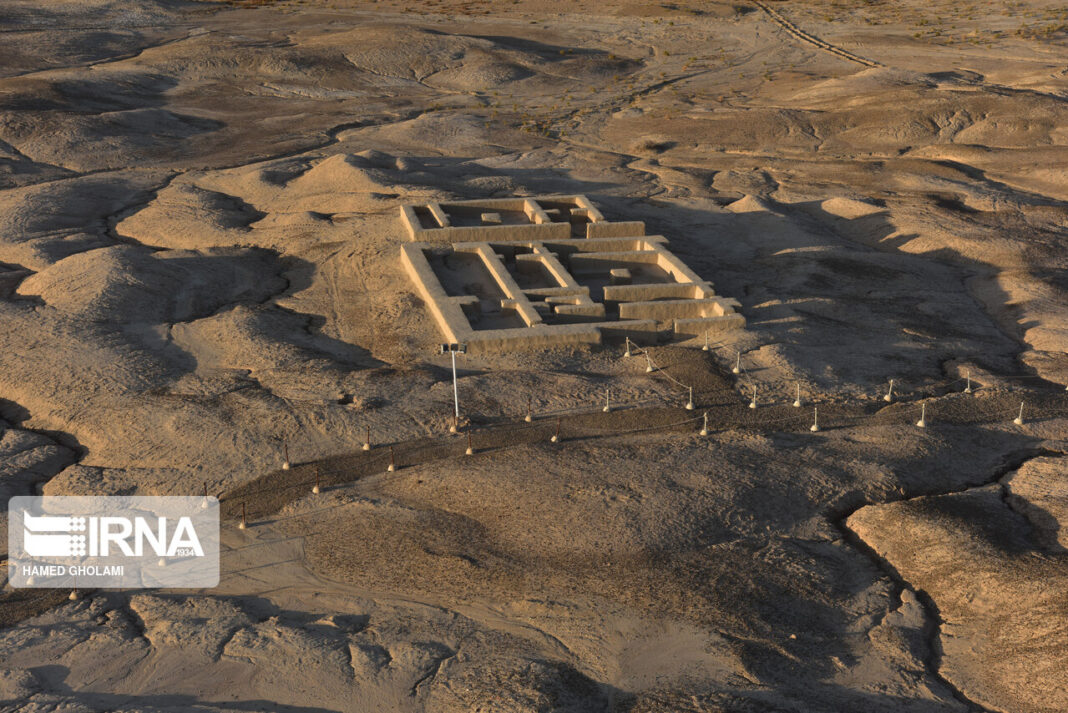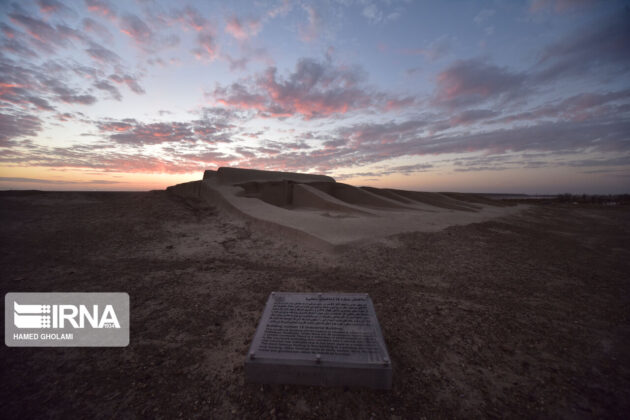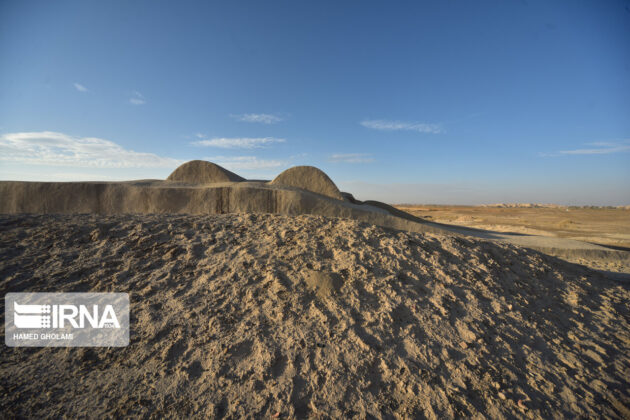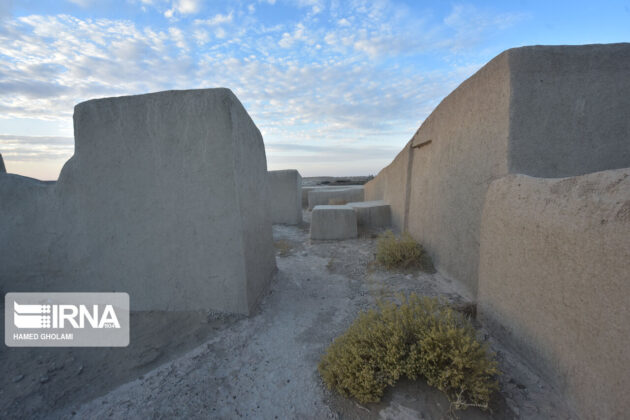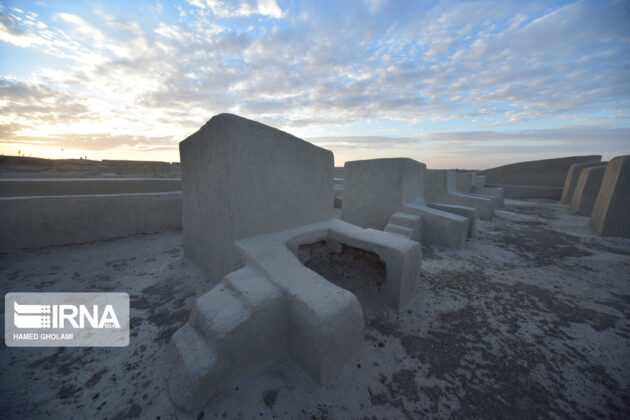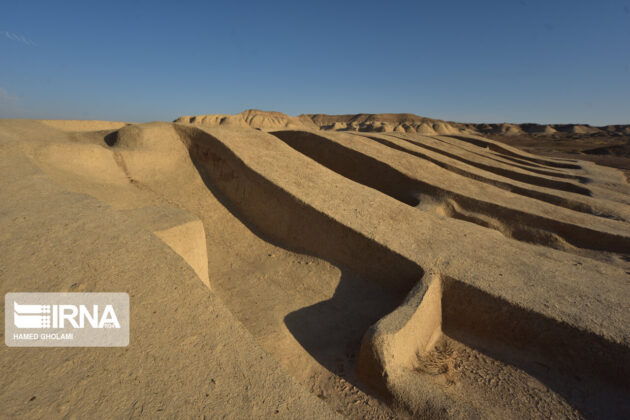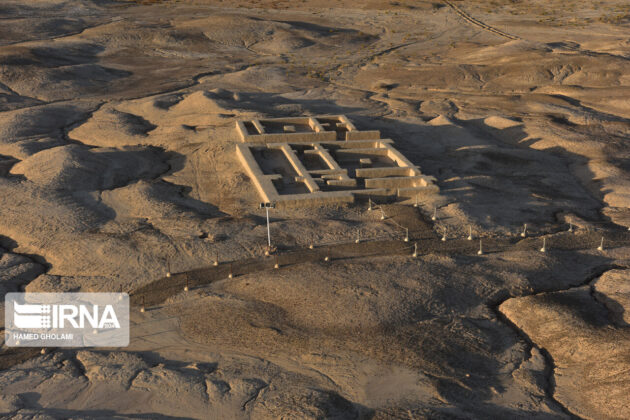The town lies 10 kilometres from the Ghale-No village of the Zahak town and 57 kilometres from the city of Zabul in Sistan and Baluchestan province.
The name “Dahaneh-Gholaman” literally means “The Strait of Slaves.” In fact, the town was named after a natural strait through which slavers brought African slaves into Iran to sell them.
The town of Dahaneh-Gholaman dates back to the Achaemenid era, and is the only ancient sites where remains of homes have also been found in addition to traces of public and religious buildings.
The central part of the town measures around 88 hectares, and the entire town is estimated to be 100 hectares.
Of the 27 buildings available, eight are very important from an archaeological standpoint. These buildings, including three in the eastern part and five in the western part, used to have social, administrative and religious applications.
The buildings in the town have been constructed on a natural terrace.
Remains of buildings show the city was evacuated quickly, but calmly after 150 to 200 years.
Several factors, including war and fire, contributed to the town being abandoned. However, the sudden drying up of the Helmand river was the key contributing factor.
